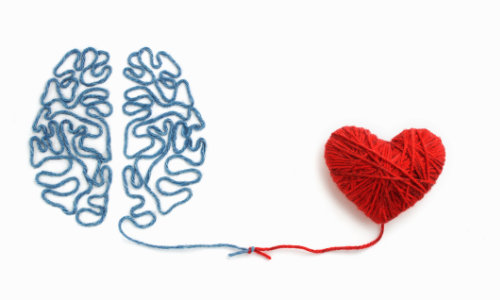Isn't decision-making an interesting process? I think so.
Often our decision-making is subconscious or habitual as we deal with hundreds of minute decisions each day, giving little consideration to so many of the choices we make. Flippantly choosing between radio or podcast on the commute today, to have that post-lunchtime coffee or be ‘good’ and have a glass of water instead, or the classic beans or peas with dinner. A second or two to mull it over and we’re already well on the way to the next choice to be made.
But what about the bigger decisions, the choices that have more of an impact on our lives, that are less easy to undo once done, the decisions that impact others? How conscious are any of us of how we approach these more meaningful, impactful decisions and what options we have at our disposal on how to help us decide?
Approaches to Decision-Making: Exploring the Paths to Effective Choices
We are not all critical thinkers. Some lead with the head, others with the heart, and some with elements of both. And none of these are wrong.
Deciding can be impulsive. Or equally, decision-making can be, well, remind me, what was it now? Oh yes. Drawn out.
There are many contrasting methods for how we can approach deciding, and for some of us, many decisions, on a regular basis, that we’re unable to avoid, form a vital part of our jobs.
At work, we hope we will be data-led with how we decide between one option and another, letting the analysis of evidence guide our hand. We should be applying a logical and practical approach to mitigate risks. However, it is too easy to fall into the realm of deciding on a course of action for a more irrational reason, such as anecdotal evidence from a friend or colleague, or crumbling under time pressure and responsibility and making a rash decision.
So, it is probably time to get introspective.

The Psychology of Choice: Understanding Your Decision Style
Kendra Cherry, MSEd outlines some of the common strategies that people apply to major decisions, where we need to invest time and effort to ensure a considered and effective outcome. The most basic of these is the Single-Feature Model, where a choice is made based on one variable. In a procurement scenario, this could be cost. But in approaching decisions focusing on one factor only, what are you missing?
Taking a considered approach to vital decision-making can be crucial in determining a positive outcome. If you think about a task or project long enough, there are a surprising number of variables that could be included in your decision-making process.
However, do you ever fall prey to being too considered to the point of inaction? Weighing up the pros and cons then being no closer to which path to take?
There are various extremes in making a choice. As we’ve touched on, it could be too swift and unconsidered, the Single-Feature Model in some cases, or too drawn out. Another spectrum to consider is your level of engagement. Do you have any bias that could be based on personal experience that would sway your choice? Are you in fact indifferent to a situation so are easily guided or influenced? If you’re chairing a meeting, or discussing an issue in a group, do you go with the majority, be led by others because you’re not engaged, or are disinterested?
Disconnectedness doesn’t always mean disinterestedness though. Decisions and choices can be made unconsciously, in an unconsidered manner, with little thought but you feel it, it's natural. Some choices are inherent to who you are. There will always be one answer and no other, so not something you need to think about for long at all.
The middle ground is often where we find balance. It could be seen as sitting on the fence, being difficult as you don’t have a strong opinion either way. However, taking a neutral stance in the early stages can be exceptionally beneficial, a positive. It can provide an open forum for discussion, allowing trustworthy sources to aid decision-making, for data to be gathered and analysed, and for the relevant parties to meet and discuss all angles and possible outcomes.
The gritty underbelly of neutrality is less than ideal though. Persuasion. Coercion. It is in these situations that we must question our intentions as well as our ethics. Does the choice you make have the intention to disrupt or unsettle, or calm and placate? Is it selfishly made to express a point of view, to agree or disagree with someone else's point of view, to demonstrate your power or position?
If you are aware that you are not making decisions for an ethical or moral reason, that it’s not based on your competency, or a drive to produce the best scenario for your business, then it is not too late. Self-awareness is a vital step on the journey to instigating change. Now is the time to pause, learn, then take the next step, whether that is on the same path or a new one.

Looking Back Whilst Remaining Present
“Yesterday is gone. Tomorrow has not yet come. We have only today. Let us begin.” ― Mother Theresa
We’ve covered the why, the motivations, and the influences that affect our decision-making process but how much of these processes can we only understand with hindsight or with post-event analysis?
Fire safety is life critical. Recent and upcoming changes in regulations have given clearer definitions of who are the responsible and accountable people. It is with these people that the core decision-making lies regarding the active and passive fire measures in a facility. Whether it is a school, hospital, care home, or high rise residential property, there are legal obligations for all.
What is key, but missing from legislation, is the moral obligation of the people in these important roles. Who are they and how do they go about their decision-making?
It is common now to hear that we learn more from our mistakes than our successes. This may well be the case for many but if we learn a lesson after an event, but that event is a life safety matter, then it is the actions prior to this type of event that are critical. Post-event can be too late, consequences are irreversible, the costs too high. So, what can be done?
Preplanning is crucial. Lessons learned and remediation after a fire is too late. Lives and property are at risk when we don’t take the right approach to fire safety. With any important decision, there is a key requirement to understand the risks involved, the implications, and the impact your decision could have. This is true in all things but even more so with building design and planning, construction, and maintenance.

The Practical Steps
So, with some self-reflection and understanding, we still need to establish how we get from A to B. What considerations there are and are they the same every time.
As a facilities manager or responsible person, you’ll know where you are starting from having identified shortfalls in fire safety measures and areas of required maintenance. You will also know where you need to be and by when. Within an agreed timeframe you need to reach a point where your fire doors are installed and maintained by a competent person, functioning to the required standards of fire regulations and legislation.
Decision-making operates on a sliding scale. In our industry, we don’t often have the luxury of making a choice that doesn’t have much of an impact on others. The potential errors or consequences of incorrect fire safety measures can threaten lives and property. We unfortunately bear witness to this daily.
But you have a choice. In fact, you have many. One of which can be summed up like so: basics or bells and whistles. As the RP or AP of a property or group of buildings, you have a decision to make on how comprehensive the life safety measures are that you have in place in your facility.
So, do you do what’s recommended, fit the high-end products with long product lifecycles and minimal maintenance, and employ fully accredited trades to install and maintain your building? Or do you do the minimum, only what is required by law? Something that is passable, not premium.
A critical question to ask in these scenarios is, is the minimum laid out in law sufficient in every facility or space? And who should make that decision?
Why go all out? There are many influencing factors over and above our personal preference or approach to decision-making. Financial, legal, and practical aspects heavily affect the choices we have available to us. When addressing the crucial question as to whether minimal fire safety measures are sufficient, and why would we need to do more, ask yourself, why not? Why take the risk of skirting on the edge of being compliant?
The decisions you make need to fit each unique situation, be based on specific information, timeframes, and budgets but they should hopefully always fit with your morals too. If your decision-making isn't morally led, should you be in a position of ensuring the safety of others by your actions and decision-making?
Decision-making is all about timeliness, regardless of the approach you take to it but to start you off, the CMI has helpfully created a 10-step decision-making checklist. It guides managers from step one, being clear of the scope of the decision in front of you, to step 10, monitoring and learning from the outcome. So, consider adopting this method, then working on the efficiency in which you progress through it, so you have a process that works for you, that can be completed in a timeframe to suit the task or project.

Personality and Decisions: How Traits Shape Your Choices
After all of that, the big question is: what about me? I'm joking of course but this is something that we all quietly think but infrequently say aloud. However, I am going to take this opportunity to turn the focus briefly to myself. I’ve discussed the importance of introspection, understanding yourself, and how you may need to change, so it’s only fair that I follow this suggestion too.
I have had to consider has this process, the research, and the findings, changed how I think. How self-aware was I before? With decision-making, do I know what I do, why, and can I change my processes to adapt to different situations? And more importantly, do I want to?
For many years I have had a drive and desire to deliver a high volume of tasks, in good time, and to a high standard, with a focus on right first time. One possible flaw in this approach that I can now see, is perhaps not being considered enough in some of the decision-making process, where more time could’ve been taken as realistically, there wasn’t the urgency there that I felt. If I’d given myself the slack that others do, I would’ve had the opportunity to take a different approach.
My takeaways from this will be adaptability, how important it is to be self-aware, and inclusion.
I have a fairly robust default way to approach making a choice, something that is inherently me, but I need to adapt that approach to suit individual situations. If I know how I’ll naturally tackle decision-making, I can take a moment and consider whether that is the best way in this scenario, or if there is a better way to get a grasp of a situation that will facilitate the best possible outcome. Then it is inclusion. Whether this is more data or opening up an issue to a wider forum to gain different perspectives. I feel that none of us truly operate in isolation, so reaching out when you have an important decision to make can have a significant impact on the outcome.

Navigating the Crossroads: From Insight to Action
We don't all have the luxury to execute every decision in the way we'd like but often, we can decide how we approach a decision, whom we include along the way, and to be aware of the consequences.
No matter how you go about the decision-making process, understand the starting point, the end goal, and the key points of consideration. Layer this with timeliness, the urgency that some situations require, then apply that to a framework to guide you through and you’ll be onto a winner.
“They always say time changes things, but you actually have to change them yourself.” ― Andy Warhol
As the RP or AP, it falls to you to make decisions, take responsibility for the implementation and effectiveness, and manage the time frames in which works are carried out. Making time in a process to consider different approaches is embodied by the Six Thinking Hats approach. Layering this methodology with the CIM checklist should go some way to establishing a foolproof process for decision-making.
As you decide, you shape not only yourself but the world around you.
One choice can redefine everything. What will yours be?












Comments